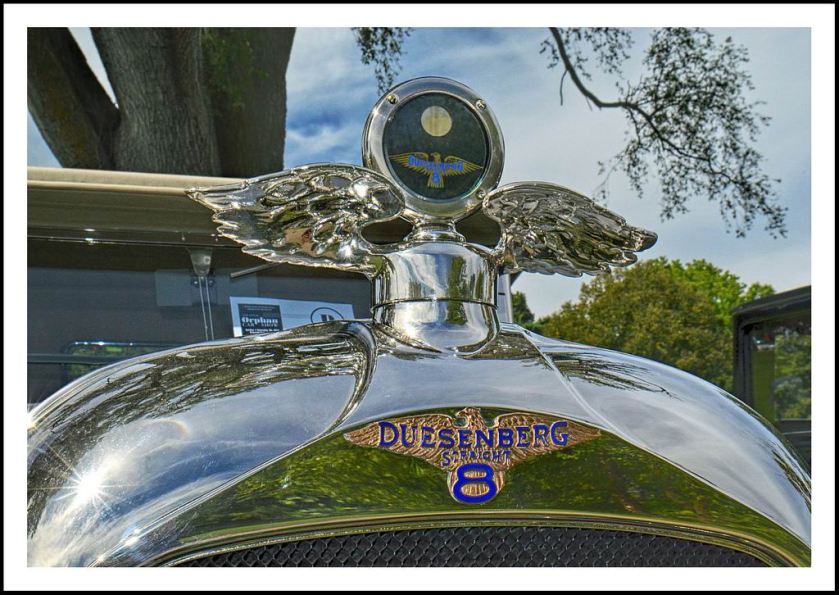
Duesenberg Automobile & Motors Company, Inc. Saint Paul, Minnesota, 1913-1937
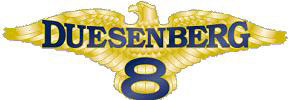 |
|
| Industry |
|
|---|---|
| Founded | Saint Paul, Minnesota, United States (1913) |
| Founder | |
| Defunct | 1937 |
| Headquarters | Auburn, Indiana, United States |
|
Number of locations
|
Auburn, Indiana |
|
Area served
|
Worldwide |
|
Key people
|
August Duesenberg & Frederick Duesenberg |
| Products | |
| Services | Automobiles, ship and airplane engines |
| Website | http://www.automobilemuseum.org/ |
Duesenberg Motors Company (sometimes referred to as “Duesy”) was an American manufacturer of race cars and luxury automobiles. It was founded in St. Paul,MN, United States by brothers August and Frederick Duesenberg in 1913, where they built engines and race cars. The brothers moved their operations to Elizabeth, New Jersey in 1916 to manufacture engines for WW I. In 1919, when their government contracts were cancelled, they moved to Indianapolis, Indiana, home of the Indianapolis Motor Speedway, established the Duesenberg Automobile and Motors Company, Inc. (Delaware) and built outstanding automobiles. In late 1926, E.L. Cord added Duesenberg to his Auburn Automobile Company. With the market for expensive luxury cars severely undercut by the Depression, Duesenberg folded in 1937.
History
In 1913, brothers Fred and Augie Duesenberg founded Duesenberg Motors Company, Inc. on University Avenue in St. Paul, Minnesota, to build engines and race cars. The brothers were self-taught engineers and built many experimental cars. Duesenberg cars were considered some of the very best cars of the time, and were built entirely by hand. In 1914, Eddie Rickenbacker drove a “Duesy” to finish in 10th place at the Indianapolis 500, and Duesenberg won the race in 1924, 1925, and 1927. The fledgling company sidestepped into aviation engine manufacturing when Colonel R.C. Bolling and his commission acquired a license to produce the Bugatti U-16 for the U.S. Army Air Service. The end of World War I stopped this project before it could ever mature.
In 1921, Duesenberg provided the pace car for the Indy 500, driven by Fred Duesenberg. In 1923, Jimmy Murphy became the first American to win the French Grand Prix when he drove a Duesenberg to victory at Le Mans.
Products
Model A (1921–1927)
At the end of World War I, they ceased building aviation and marine engines in Elizabeth, New Jersey. In 1919 the Duesenberg brothers sold their Minnesota and New Jersey factories to John Willys and moved to a new headquarters and factory in Indianapolis, where the “Duesenberg Automobile and Motors Company, Inc.” was established in 1920 to begin production of passenger cars. The plant was located on a 17-acre (69,000 m2) site on West Washington street at Harding street until 1937.
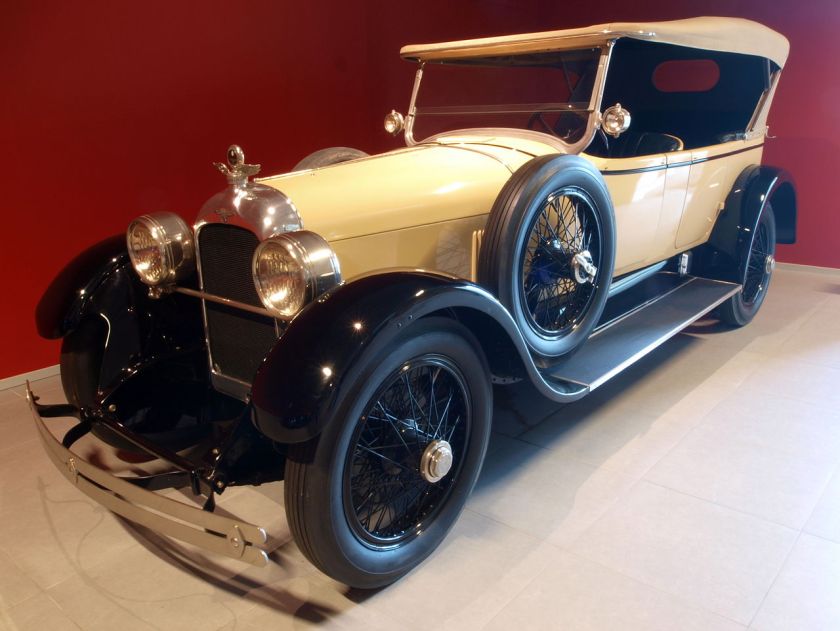
Although the Duesenberg brothers were world-class engineers, they were neither good businessmen nor administrators; they were unable to sell all the units of their first passenger car, the Model A. This had the first “mass-produced” straight eight engine in the U.S. It was an extremely advanced and expensive automobile (prices began at $6,500), offering features such as single overhead camshafts, four-valve cylinder heads, and the first four-wheel (16″) hydraulic brakes (designed by Fred in conjunction with Lockheed) offered on a passenger car anywhere (predating Adler‘s introduction to the European market in 1926 on the “Standard 6”). The Model A was a lighter and smaller vehicle than the competition. It was among the most powerful and the fastest cars of its time. Among the celebrities who purchased this model were Tom Mix and Rudolph Valentino.
The model experienced various delays going from prototype to production. Deliveries to dealers did not start until December 1921. Sales lagged and the goal of building 100 Duesenbergs each month proved far too high, as the Indianapolis plant struggled to roll out one a day. In 1922 no more than 150 cars were manufactured, and only 650 Model As were sold over a period of six years.
1922 Model A specifications
| Engine | Power | Transmission | Wheelbase | Ground clearance | Frame |
|---|---|---|---|---|---|
| 260CID 1-bbl. I8 | 90-100 hp | 3-speed manual | 134 in (3,404 mm) | 10 in (254 mm) | Chrome Nickel steel 6.40-inch (163 mm) in depth |
Winning races did not translate into financial success either, although that winning reputation would eventually attract new investors, who supplied the cash flow to prop up the production facility. The brothers continued to create excellent engines for cars, boats, and a few planes but only as employees of various capitalist investors who bought the rights to their famous family name.
The firm had already acquired a considerable aura of prestige when in October 1919, Fred signed over the rights to his name, patents and drawings for a passenger car to a pair of promoters, Newton E. Van Zandt and Luther M. Rankin. On March 8, 1920, these men became president and vice president of the “Duesenberg Automobile and Motors Corporation of Indianapolis”. Fred was chief engineer and Augie his assistant, and both were salaried as employees.
Van Zandt quit after a year, and business went from bad to worse in 1923. In 1924 the company went into receivership, but somehow it survived that year. In 1925, the firm’s name was changed to “Duesenberg Motors Corporation” and Fred assumed the title of president. Fred and August struggled to keep the company, but to no avail, as they weren’t able to raise enough capital.
Model X (1926–1927)
Model X Duesenbergs are very rare. It was a sportier version of the model A with a heavier and longer (136 in (3,500 mm) wheelbase) chassis and 100 hp (75 kW) engine that enabled it to reach 100 mph (161 km/h). The most notable differences between the A and X were that the latter had hypoid differentials and all its valves were on one side; it sported the hydraulic brakes that Fred had originated on his 1914 racing cars. This braking system could have earned him a fortune if he had obtained a patent.
According to Randy Ema, the top Duesenberg authority in the United States, only 13 were built. They fit in between the Duesenberg Model A and the famous J; only four were known to survive until automobile preservationist Jay Leno found a fifth X in a neighborhood garage in 2005.
Model J (1928–1937)
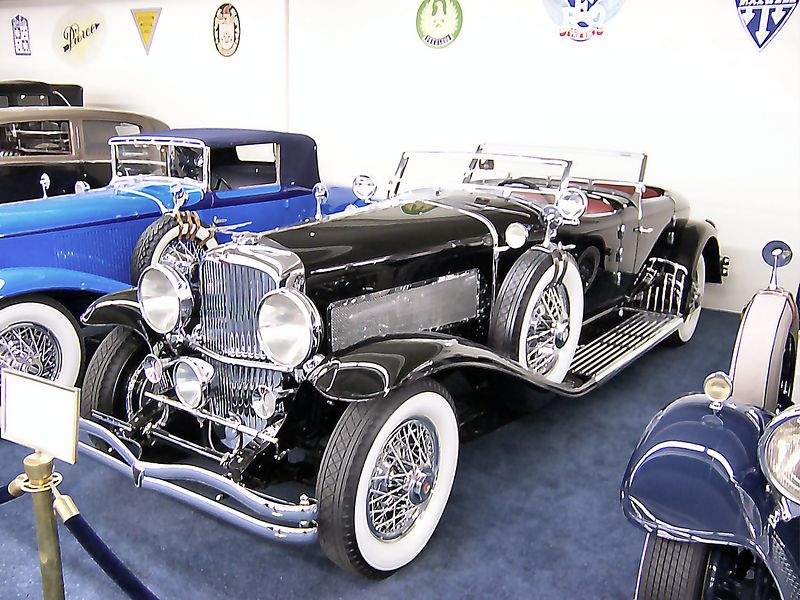
E.L. Cord bought the company on October 26, 1926 for the brothers’ engineering skills, talent and the brand name in order to produce luxury cars. He challenged Fred Duesenberg to design an automobile that would be the best in the world. Indeed, Cord wanted the biggest, fastest, and most expensive car ever made. He also ordered a large chassis to be able to compete with the biggest, most powerful, and most luxurious European cars of the era, such as Hispano-Suiza, Isotta Fraschini, Mercedes-Benz, and Rolls-Royce.
After Cord’s takeover, the new company was renamed “Duesenberg, Inc.” Fred would continue in the new organization, now with the title of vice president in charge of engineering and experimental work. Whereas Augie had played an important role in the development of the Model A and its variant, the very rare X, he had nothing to do with the J and had no formal connection with Duesenberg, Inc. until later. According to the expert Marshall Merkes, “Cord did not want Augie around.” However, all Duesenberg racing cars produced after 1926 were Augie-built in an enterprise that functioned separately, and in a building apart from the main Duesenberg plant. He was also responsible for a number of engineering achievements like the superchargers he developed for both the Auburn and Cord motorcars.
The newly revived Duesenberg company set about to produce the Model J, which debuted December 1 at the New York Car Show of 1928. In Europe, it was launched at the “Salon de l’automobile de Paris” of 1929. The first and — at the time of the New York presentation — only example made of the series, the J-101, was a sweep-panel, dual-cowl phaeton, with coachwork by LeBaron, finished in silver and black. By the time the Great Depression hit in October 1929, the Duesenberg Company had only built some 200 cars. An additional 100 orders were filled in 1930. Thus, the Model J fell short of the original goal to sell 500 cars a year.
The Model J’s straight-eight was based on the company’s successful racing engines of the 1920s; designed by Duesenberg, they were manufactured by Lycoming, another company owned by Cord. In unsupercharged form, the eight produced an impressive (for the period) 265 horsepower (198 kW), aided by dual overhead camshafts and four valves per cylinder. The Model J was capable of a top speed of 119 mph (192 km/h), and 94 mph (151 km/h) in second gear. Other cars featured larger-displacement engines, but none surpassed its power. It was also both the fastest and most expensive American automobile in the market.
As was the custom among the luxury car brands, only the chassis and engine were displayed, since the interior and body of the car would be coachbuilt to the owner’s specifications. The chassis on most Model Js were the same, as was the styling of such elements as fenders, headlamps, radiator, hood and instrument panel.
Duesenberg bodies came from both the United States and Europe, and the finished cars were some of the largest, grandest, most beautiful, and most elegant cars ever created. About half the Model Js built by Duesenberg had coachworks devised by the company’s chief body designer, Gordon Buehrig. The rest were by independent coachbuilders from the United States, such as Derham, Holbrook, Judkins, Le Baron, Murphy, Rollston (later renamed Rollson), Walker, Weymann, and Willoughby, and from European works Fernandez et Darrin, Franay, Gurney Nutting, Saoutchik, etc. However, other coachworks were made by Duesenberg branches in Chicago, New York City, Los Angeles, Philadelphia, Florida and Denver, as well as by smaller dealers. For the in-house bodies Duesenberg used the name of La Grande.
The chassis cost $8,500 ($9,500 after 1932); the completed base model cost between $13,000 and $19,000 (two of the American-bodied J’s reached $25,000), at a time when the average U.S. physician earned less than $3,000 a year. Figures are not available as to the prices charged by deluxe coachbuilders in Europe, but it is reasonable to assume the final selling price of the products mounted on the costly imported chassis were considerably higher than their all-American-built counterparts.
The J was available in two versions of chassis with a different wheelbase; a long one (153.54 in (3.90 m)) and a short one (about 141.73 in (3.60 m)). There were also other special sizes, like the only two SSJs with a wheelbase shortened to 125 in (3.18 m) and a couple of cars with the wheelbase extended to 4 m (160 in) and over.
The dashboard included lights that reminded the driver the oil needed changing and the battery should be inspected.
A series of minor modifications were carried out during the production life, but most of the design remained the same up until the factory closed in 1937. First to go was the four-speed gearbox, which proved unable to handle the engine’s power. It was replaced by an unsynchronized three-speed gearbox, which was fitted to all subsequent Duesenbergs. Unlike almost all American manufacturers, Duesenberg did not switch to a fully synchronized gearbox in the mid-1930s, which made the Model J difficult to drive and outdated. By 1937 the chassis and gearbox were ancient compared to the competition.
Regarding this model, it is necessary to emphasize that most of them (engine and chassis) were made in 1929 and 1930, but due to the Depression, high price, and other factors, were sold in subsequent years. The year it was bodied is used to date a particular J, though the chassis was made in an earlier year.
The supercharged version, often referred to as the SJ, was reputed to achieve 104 miles per hour (167 km/h) in second gear and have a top speed of 135–140 miles per hour (217–225 km/h) in third gear. Zero-to-60 mph (97 km/h) times of around eight seconds and 0–100 mph (0–161 km/h) in 17 seconds were reported for the SJ in spite of the unsynchronized transmissions, at a time when even the best cars of the era were not likely to reach 100 mph (160 km/h). Duesenbergs generally weighed around two and a half tons; up to three tons was not unusual, considering the wide array of custom coachwork available. The wheelbase was 142.5 in (362 cm).
This rare supercharged Model J version, with 320 hp (239 kW) was also created by Fred Duesenberg. and introduced in May 1932, only 36 units were built. Special-bodied models, such as the later “Marmon Meteor” chassis, achieved an average speed of over 135 mph (217 km/h) and a one-hour average of over 152 mph (245 km/h) at Bonneville Salt Flats, Utah. The SJ’s supercharger was located beside the engine; to make room for it, the exhaust pipes were creased so they could be bent easily and extended through the side panel of the hood. These supercharged cars can be recognized by these shiny creased tubes, which Cord registered as a trademark and used in his other supercharged cars from Cord and Auburn.
Fred Duesenberg died of pneumonia on July 26, 1932, resulting from injuries sustained in an automobile accident in which he was driving a Murphy-bodied SJ convertible. His brother, Augie, took over Fred’s duties as chief engineer and Harold T. Ames became president of Duesenberg, Inc.
The SSJ is very similar to the SJ version, but with close to 400 hp (298 kW). The only two examples built in 1935, the SSJ Speedsters sported a lightweight open-roadster body produced by Central Manufacturing Company, an Auburn subsidiary in Connersville, Indiana. One of them belonged to the actor Gary Cooper, the other one was lent by the company to actor Clark Gable, who already owned a Duesenberg J. The inscription SSJ (same goes for SJ) has never been officially used by the company, but it eventually became commonly used among the car lovers. The second “S” stands for “short wheelbase” as the two SSJ are the only Duesenberg to have a chassis with the wheelbase shortened to 125 in (3,200 mm). The 420 cu in (6.9 l) straight eight engine of both SSJ models is equipped with two special carburetors and inlet ports of a special shape called “ram’s horn”, which was used in other SJs as well. Unlike the normal port, the “ram’s horn” is composed of two horns, with each of the two being split in two again. At the rear, the SSJ sported an external spare tire and smaller “later-style” round taillights. The external exhaust pipes sprouting out of the hood were an indication it was the “supercharged” version, but these were optional on J models as well.
There is another version of the model J known as the Duesenberg JN (a name never used by the company either). All JNs were sold with Rollston coachwork and only ten were produced in 1935. In an attempt to give a more modern look to an ageing design, the JN was equipped with smaller 17 in (43 cm)-diameter wheels (versus 19 in (48 cm)), skirted fenders, bullet-shaped taillights, and bodies set on the frame rails for a lower look. The battery box and tool box were redesigned slightly so that the doors could close over the frame. Supercharged JNs gained the logical SJN designation.
The Model J quickly became one of the most popular luxury cars, as well as a status symbol in the United States and Europe, driven by the rich and famous, including Al Capone, Evalyn Walsh McLean, Greta Garbo, Howard Hughes, Mae West, Marion Davies, Tyrone Power, Clark Gable, Bill “Bojangles” Robinson, William Randolph Hearst, Powel Crosley, Jr., the families Mars, Whitney, and Wrigley; members of European royalty such as the Duke of Windsor, Prince Nicholas of Romania, Queen Maria of Yugoslavia, and the Kings Victor Emmanuel III of Italy and Alfonso XIII of Spain. The latter was very keen on motoring and chose his now-missing Duesenberg J, among his cars, to go to exile after the proclamation of the Second Spanish Republic. Father Divine had the last Duesenberg chassis built with an extra-long 178-inch wheelbase. It weighed 7,800 lb (3,500 kg) and accommodated ten passengers. J. Herbert Newport was the designer. Built by Bohman and Schwartz and delivered in October 1937, it was 22 ft (6.7 m) long and 7 ft (2.1 m) wide. It was known as Father Divine’s Throne Car, because it had a removable rear top section that exposed two raised rear seats.
Originally, New York supported the Model J. New York was the financial capital of the United States in 1929, and many of its people could afford such a very expensive car. As the Depression deepened, however, power shifted, and ultimately it was newly wealthy Hollywood that kept Duesenberg alive through much of the 1930s. It was so reputed and imposing that many Hollywood stars, such as James Cagney, posed next to the car to promote their careers.
Duesenberg advertising the Model J as “The World’s Finest Motor Car”. In their print ads, an elegant man or woman were seen together with a concise but meaningful sentence: “He/She drives a Duesenberg”. The campaign was a success.
There was a gradual evolution (up to the 1937 model) to preserve the “stately lines” while moving into a more integrated mode of styling. The final evolution of the Duesenberg engine was ram-air intakes, which were added to some of the last supercharged models to produce 400 hp (298 kW), referred to as “SSJ”. Of 481 Model Js built (including all its versions) produced between 1928 and 1937, about 378 survive.
Duesenberg ceased production in 1937 after Cord’s financial empire collapsed. However, between 1937 and 1940 two automobiles put the final touch to this historic marque. The first one was delivered by the coachbuilder Rollson to the German artist Rudolf Bauer in April 1940; it is both the longest Duesenberg and the last one delivered. The last one ever made was assembled from leftover parts between 1938 and 1940.
In 1940, Augie Duesenberg sold marine versions of the current 254-ci splash-oiled Hudson flathead inline eight.
Duesenberg became far less popular during World War II, by the end of which a few Model Js were advertised for around $300 to $400, with some ultimately selling for only $100 or $200. Business rebounded in the 1950s, when classic and vintage cars became popular among collectors. Several Model Js were advertised in the New York Times in 1951, at prices as low as $500. By 1959 a decent example could not be bought for less than $4,000.
A distinctive feature of the Duesenberg Model J was the “bowtie” style front bumper, which used two pieces of steel, with the top piece bent to resemble a bowtie.
Production summary
| Name | Years of production | Units made |
|---|---|---|
| Model A | 1921–1927 | ~650 |
| Model X | 1926–27 | 13 |
| Model Y (model J prototype) | 1927 | 1 |
| Model J (including SJ, SSJ, JN & SJN) | 1929–37, SJ: (1932–37), SSJ: (1935), JN & SJN: (1935) | Total: 481, S(36), SSJ (2), JN & SJN (10) |
Revivals
After World War II, August Duesenberg tried to revive the Duesenberg name but was unsuccessful; several later attempts were also unsuccessful. The closest came in the mid-1960s with Fritz (August’s son) at the helm and Virgil Exner as the stylist using the chassis of a 1966 Imperial and a Chrysler engine. One of Exner’s Duesenberg designs was later produced as a replicar Stutz Bearcat.
A 1970s Duesenberg was also created, based on a contemporary Cadillac Fleetwood and with modern styling. Its production was a limited run.
A reproduction automobile called Duesenberg II was produced between 1978 and 2000 by the Elite Heritage Motors Corp and successor company Duesenberg Motors Inc. in Elroy, Wisconsin. Five body models of the original Duesenberg J were offered. Each one was copied from an original and visually almost identical, with Ford Lincoln drive train, Ford V8 engine and modern comfort features. These replicas sold for up to US$225,000. Fewer than 100 total were made.
In 2011 a new company with worldwide trademark rights was established as Duesenberg Motors Inc., with the intention of again restarting the manufacturing of the Duesenberg II replicas in 2012 in Baldwin, Wisconsin. This effort died quickly when the owner stopped the project because of lack of cash flow. There are no products currently for sale, and future cars are unlikely.
A Duesenberg SJ convertible coupe sold for $4.5 million in March 2013.
Etymological note
The origin of the American slang word “doozy” or “doozie”, meaning something excellent or powerful, is unknown. Merriam-Webster completely rejects any origin in the automobile, noting doozy originally appeared as “dozy” in eastern Ohio in 1916 — four years prior to the production of the first Duesenberg vehicles. They also claim there is little evidence connecting the Duesenberg and doozy during the 1920s and 1930s, when the car was most popular. “Dozy” is akin to the verb “dozen” that is semantically and etymologically related to “daze” and that is attested in slang terms such as “the dozens.”
See also
- Auburn Automobile
- Cord Automobile
- Auburn Cord Duesenberg Automobile Museum
- Duesenberg Straight-8 engine
- List of automobile manufacturers
- List of defunct United States automobile manufacturers
- List of Indianapolis 500 pace cars
My collection found by searching the world wide web:
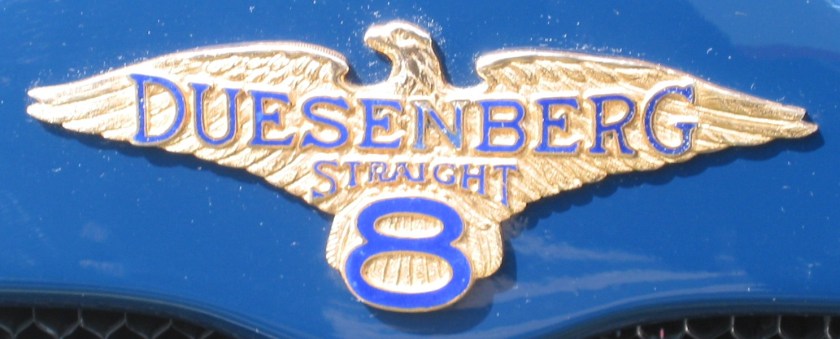

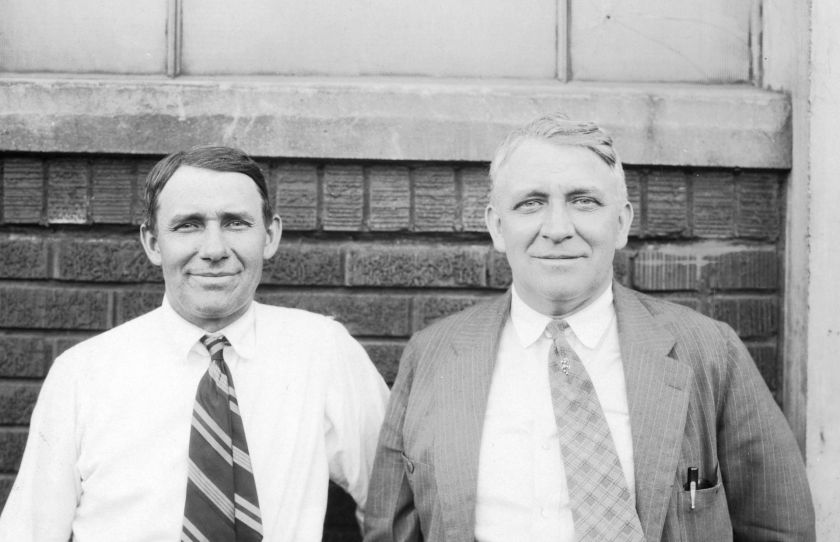
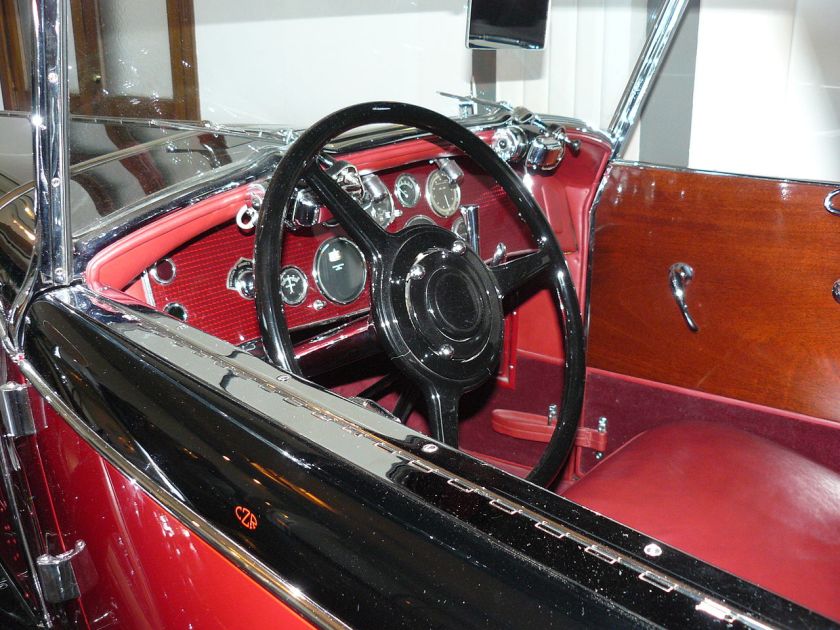
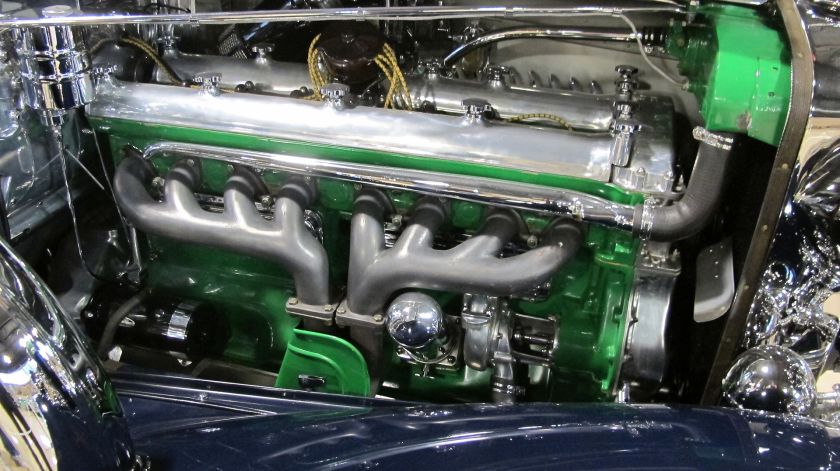
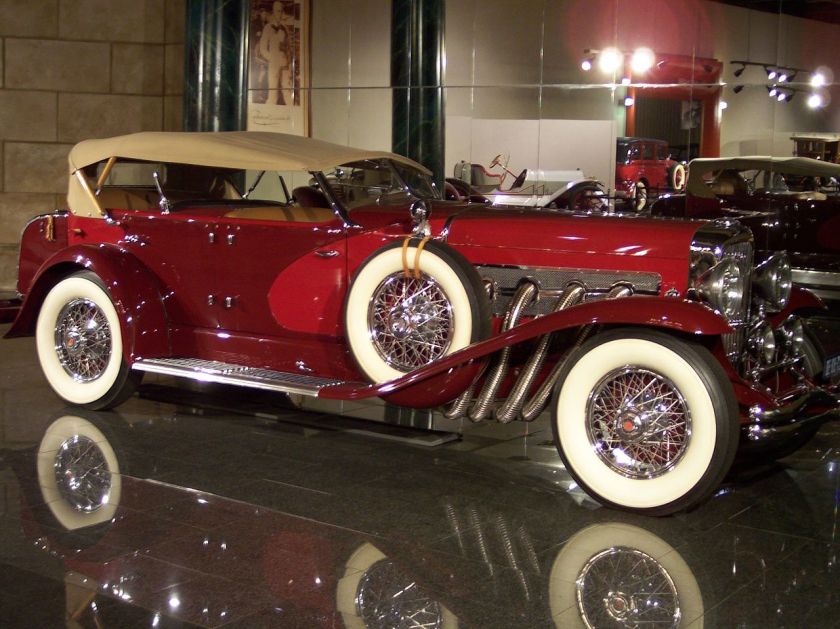
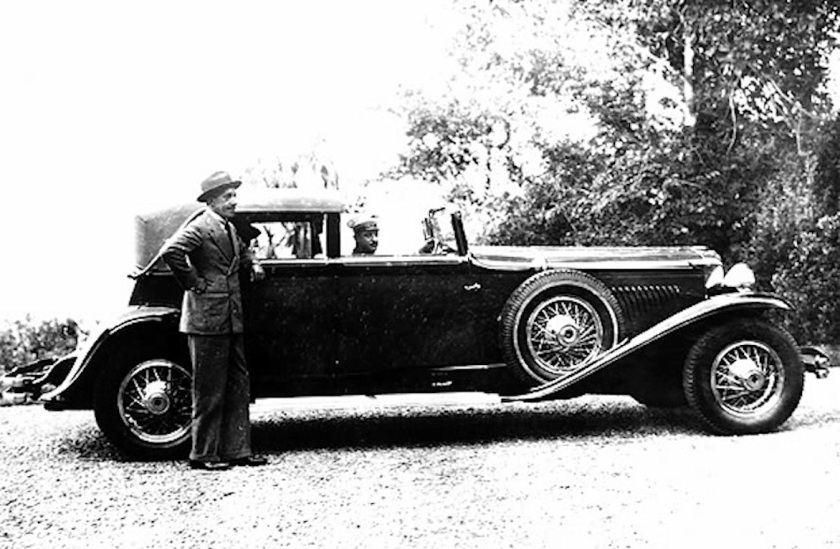
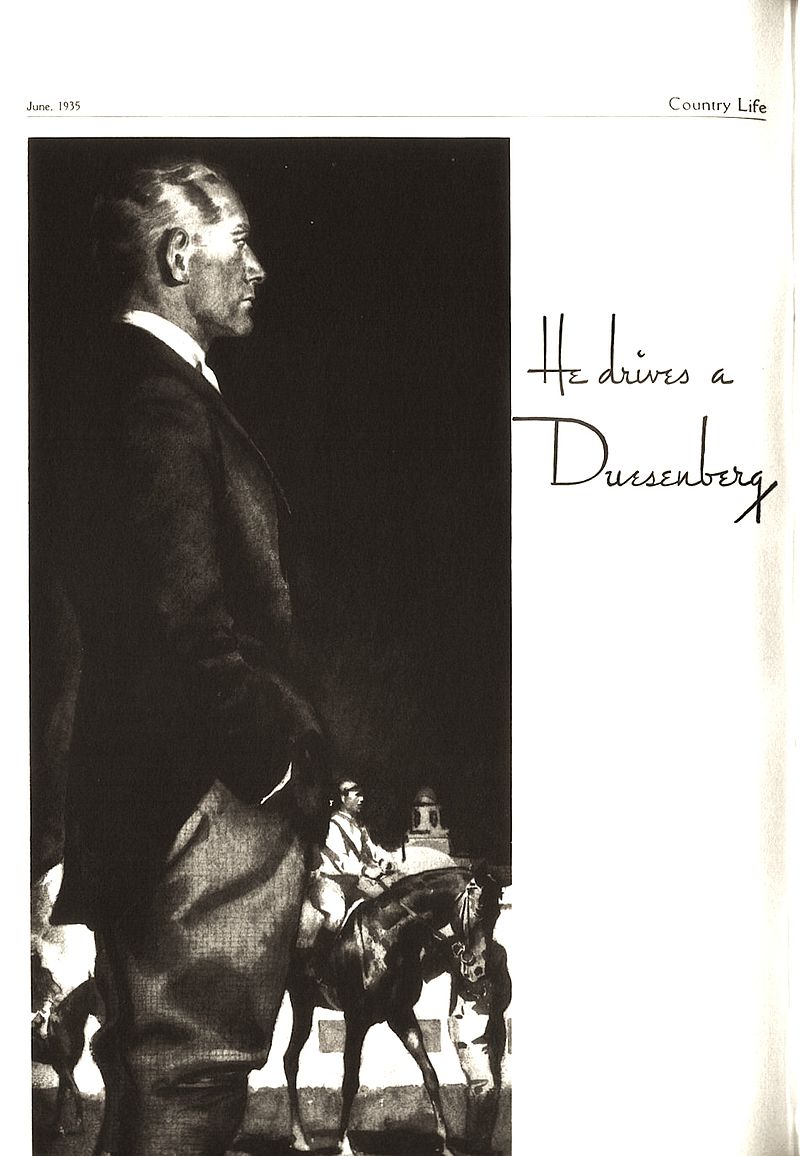
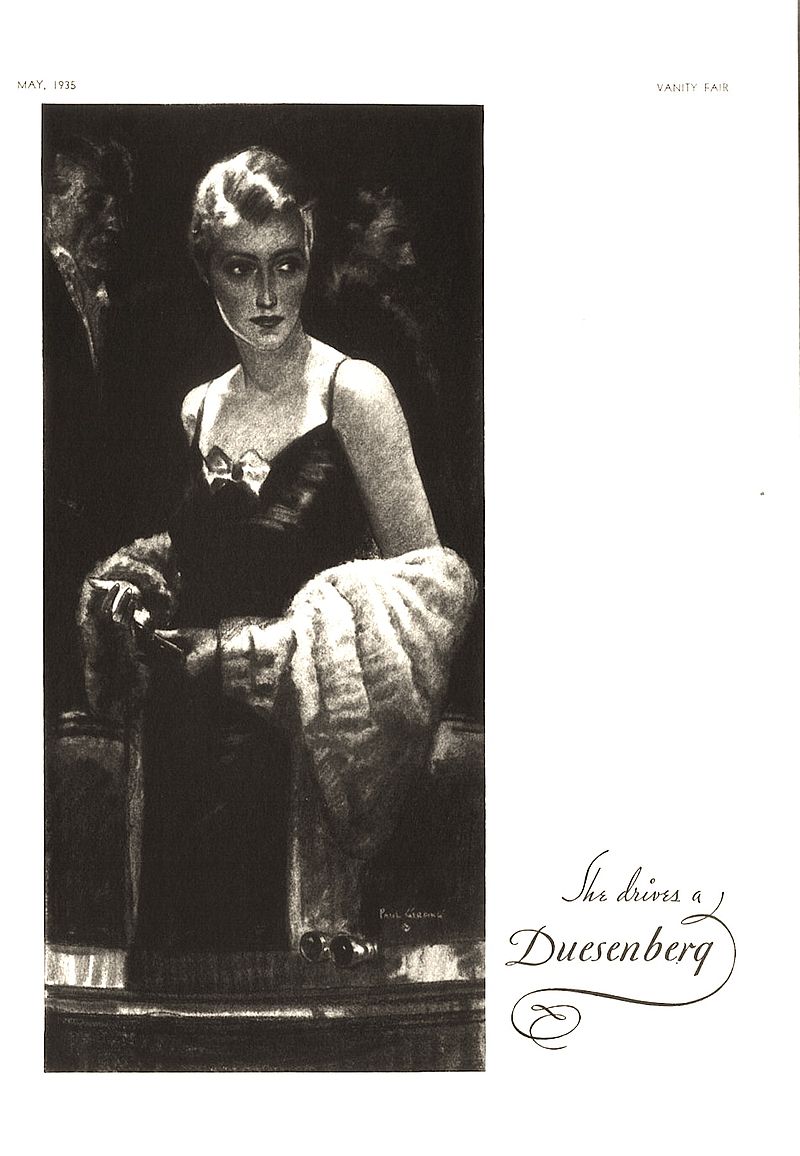
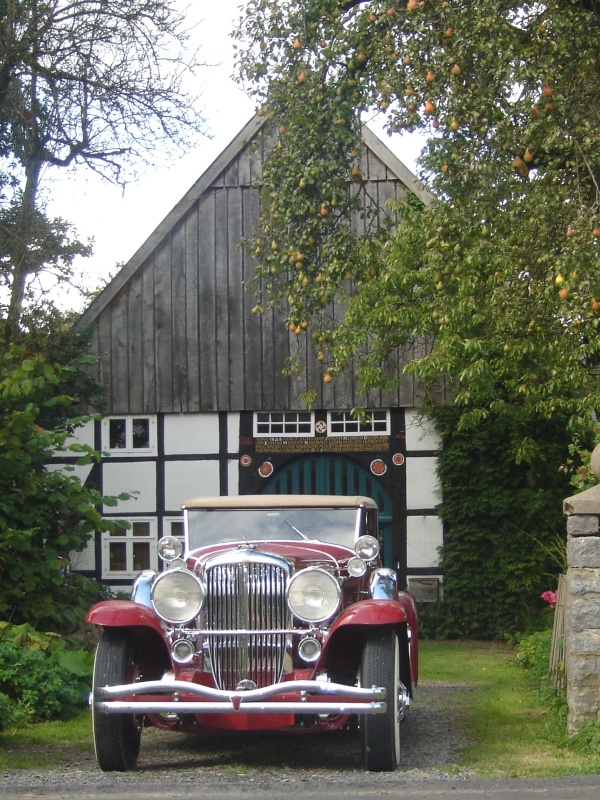






















































































































































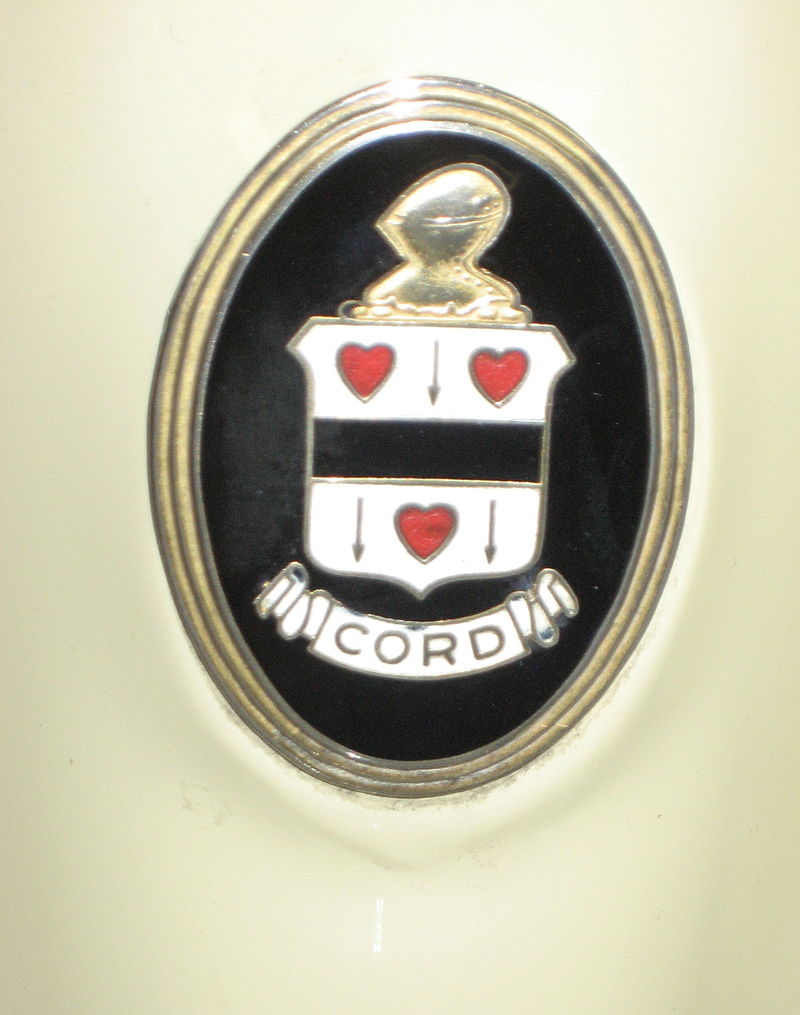
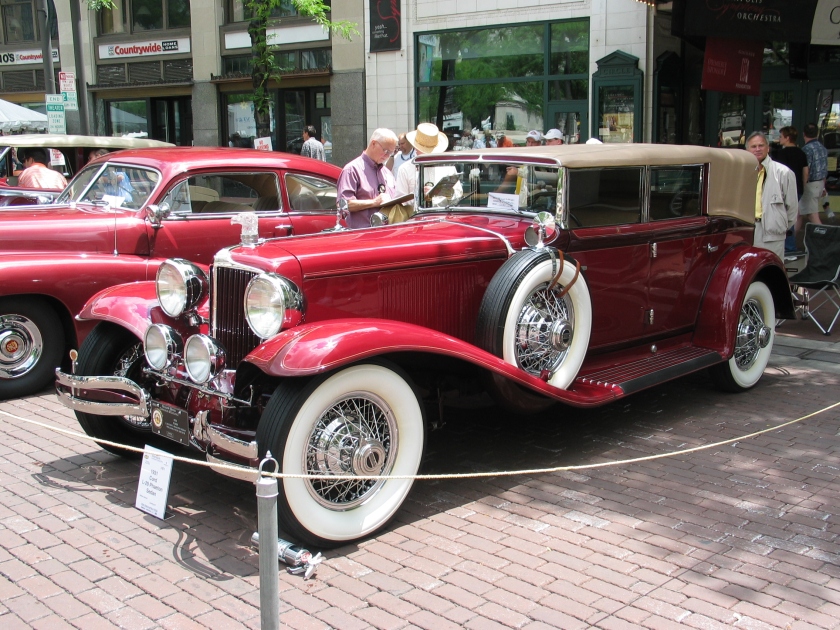
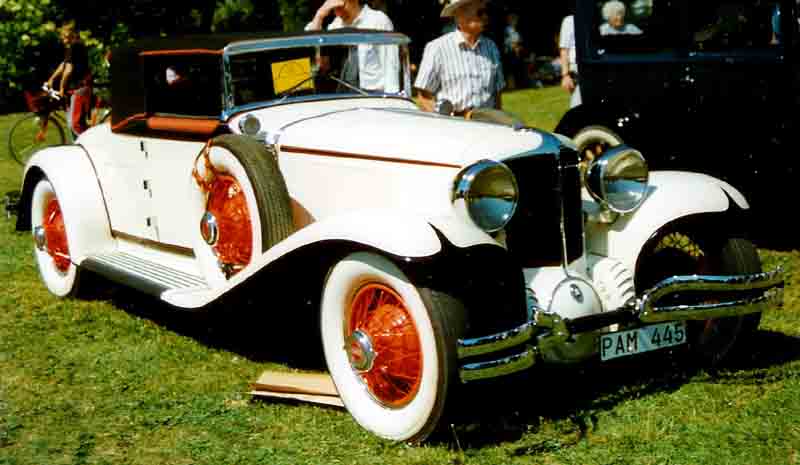
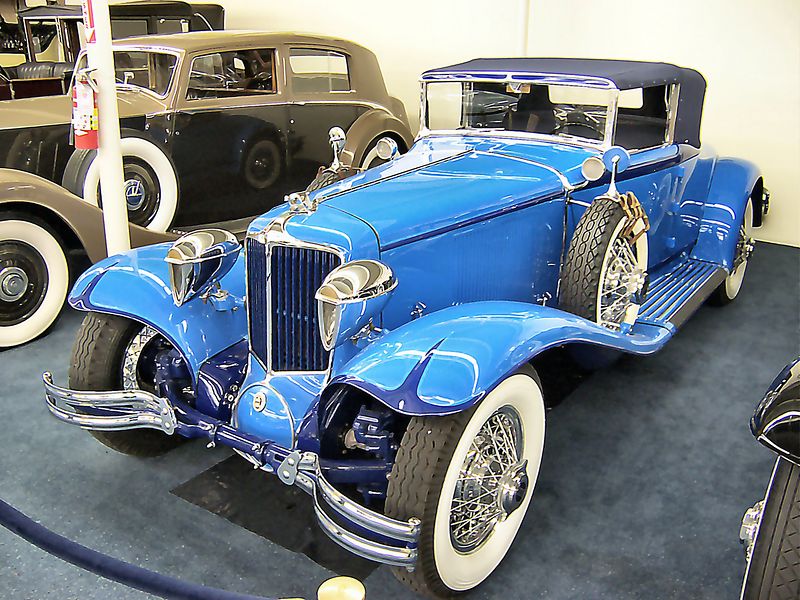
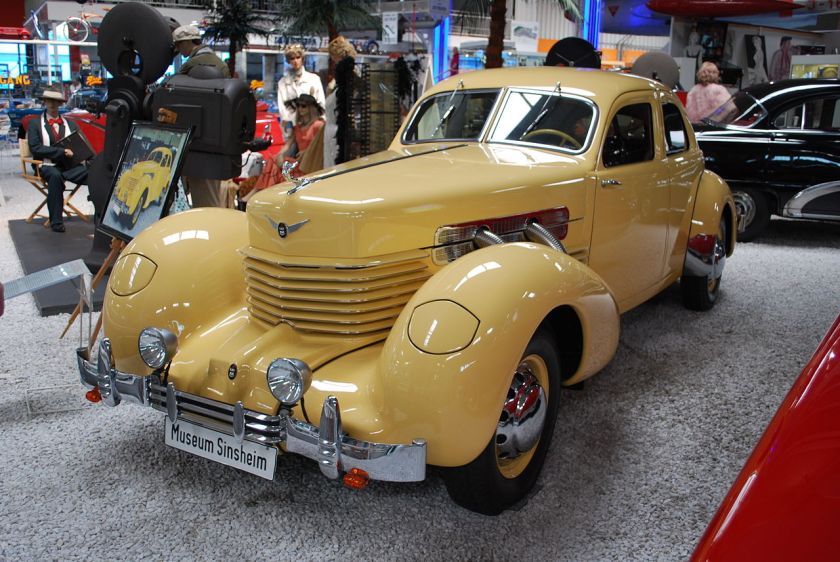
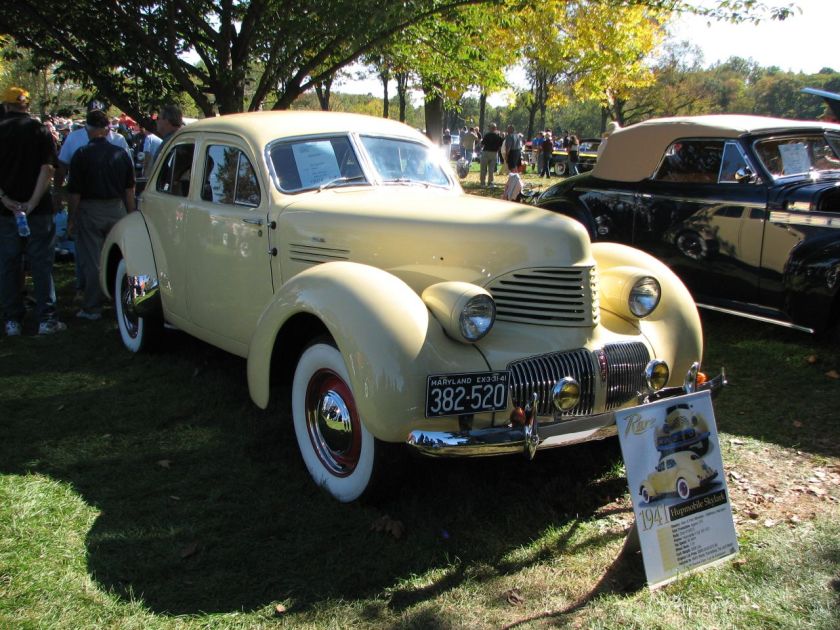



































































































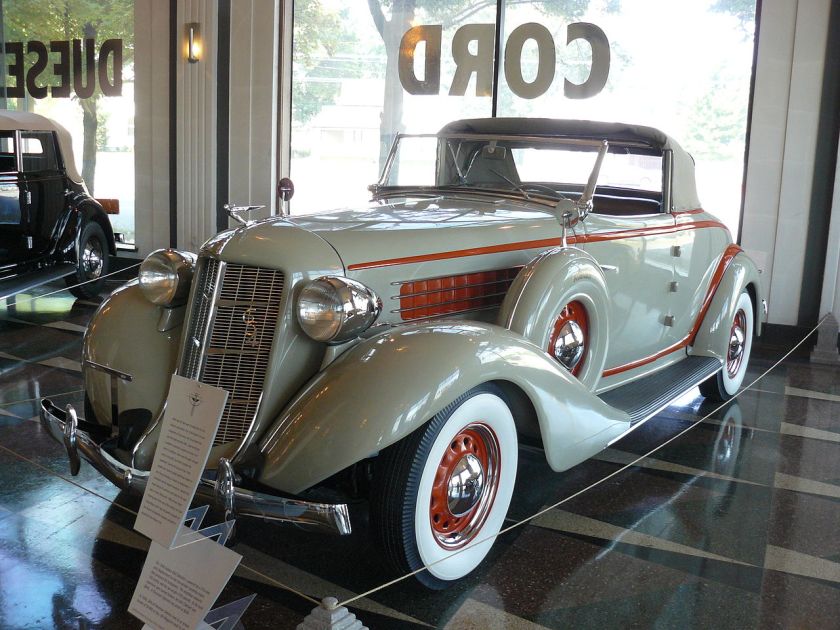
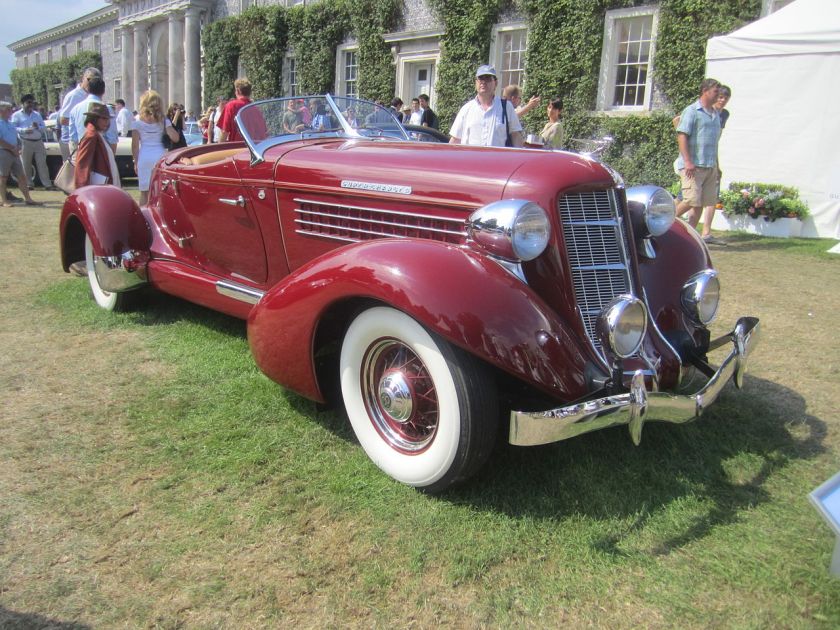
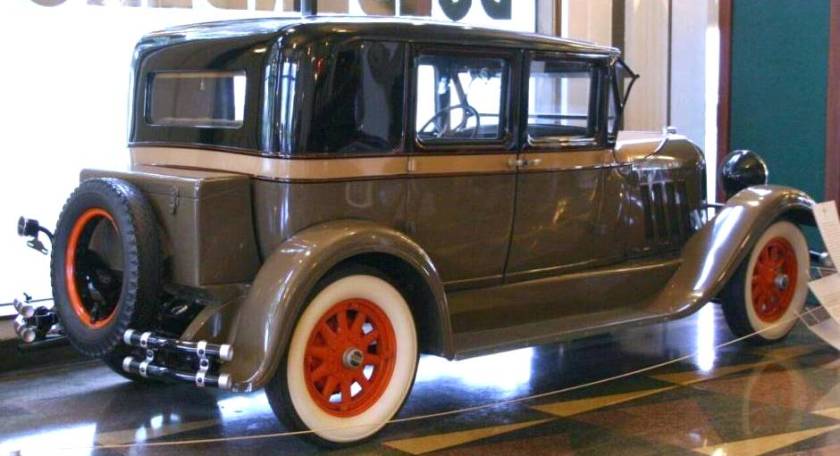
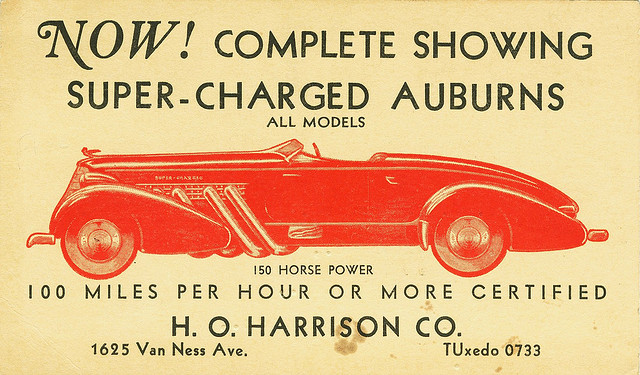



































































































































![AUBURN [possivel réplica] AUBURN [possivel réplica]](https://i0.wp.com/myntransportblog.wordpress.com/wp-content/uploads/2016/02/auburn-possivel-rc3a9plica.jpg?w=302&h=170&ssl=1)








